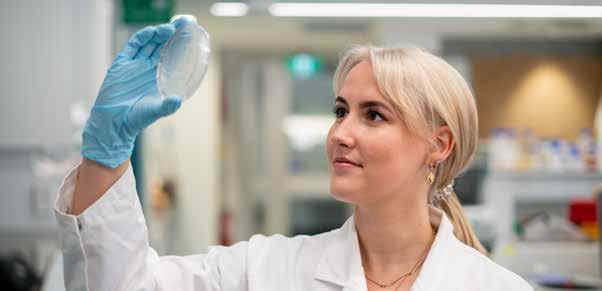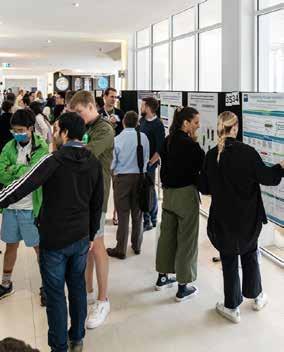
2 minute read
SKILLING FOR, AND DIVERSIFYING, THE FUTURE OF THE SUGARCANE INDUSTRY
DrMadeleine Smith is a biological scientist. In 2020 after graduating with a bachelor’s degree from the Queensland University of Technology (QUT) she began her master’s degree working under the supervision of Prof. Robert Speight and Dr James Behrendorff, supported by a research grant from SRA. Last October (2022) Madeline completed her master’s project - Engineering Pseudomonas Putida for Valorisation of Sugarcane By-products - and has spent the last few months writing up her work and submitting scientific papers.
She’s now looking forward to working with the sugarcane industry where she can see research like hers being translated to commercial outputs.
Advertisement
“QUT has a strong relationship with the sugarcane industry,” Madeleine said. “Potential research projects are proposed by supervisors, but that research can then take shape dependent on your specific interest.

“During an undergraduate degree you’re not taught how to manage a project, and you don’t have to. But for a master’s at QUT you do, it’s a ‘masters-by-research’ that requires hands-on experience.
“I’ll admit this was overwhelming at first, but I soon found I was able to direct my own research, and enjoyed the opportunity.”
The key motivation for Madeline’s two-year project was to create product, with a higher commercial value, from waste products produced in the sugarcane industry.
“The sugar industry, in Australia and globally, is the source of one of the most prolific natural biomass resources on the planet,” she said.
“Sugarcane by-products such as bagasse and molasses are a wealth of carbohydraterich biomass.
“In their simplest forms these resources are a goldmine of fermentable sugars that have the potential to be turned into second-generation biofuels, biomaterials, biochemicals and other high value bioproducts.”
In response to global demand for these products, Madeline’s project explored t he well-characterised industrial strain of the bacteria Pseudomonas putida (P. putida) and how it might be successfully engineered to break down both cellulose and sucrose.
“So, the issue with targeting cellulose, as opposed to just targeting the sugar itself, is that there are a lot of other elements to it,” Madeline said.
“You need organisms that can effectively handle all the different components of sugar-rich by-products, or bagasse, while still creating that higher value product.
“P. putida is a bacterium with high tolerance to the toxic aspects of lignin and has the potential to be engineered to produce valuable chemicals,” she said. Madeline has been able to demonstrate that the bacteria will also grow on sucrose and could be used to produce high value chemicals from molasses.
“Given there are currently no universal processes for scaling up this study, there is more work to be done before the outcomes from my work could be commercially ready,” she said.
“But I am happy to have been able to add to the repertoire of organisms and tools that will be able to support the sugarcane industry as it continues to diversify,” she said.










